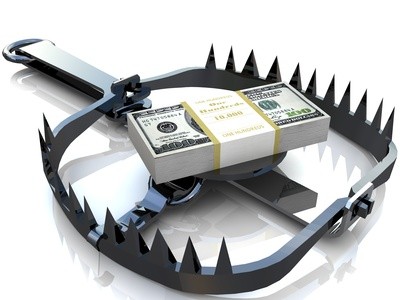Avoid Investment Pitfalls
Post on: 10 Июнь, 2015 No Comment

The road to investment success is filled with potholes. Financial markets can be impacted by wars, scandals and political events. What’s an individual investor to do?
For starters, you can keep your balance. By building a balanced portfolio, and taking a balanced view of your expected returns, you can help make steady progress toward your long-term goals — and typically avoid a lot of frustration and disappointment.
How can you build a balanced portfolio? First, you need to recognize that the term balanced» means different things to different investors. Suppose, for example, that you are by nature an aggressive investor, willing to take greater risks in exchange for potentially high returns. In your eyes, a properly balanced portfolio should be more heavily weighted with growth stocks than with fixed-income vehicles, such as Treasury bills and Certificates of Deposit. Conversely, if you are willing to sacrifice potential future growth for greater relative stability of principal, then you might view a balanced portfolio as one that has greater percentages of bonds and government securities and smaller percentages of equities.
So, how can you help keep your college-bound kids as debt-free as possible? Start by saving early. Consider tax-advantaged vehicles such as a 529 plan or a Coverdell education savings account.
In other words, the concept of balance is somewhat in the eyes of the beholder. Still, no matter what your risk tolerance is, you’ll almost certainly need some amount of diversification — some exposure to a wide variety of high-quality investments. By spreading your investment dollars among stocks, bonds, Certificates of Deposit, Treasuries and other securities, you can help maintain your balance — especially in the face of market downturns that may hit one asset class particularly hard.
While building a balanced, diversified portfolio is a key ingredient to investment success, it’s not the only ingredient. You also need to maintain a healthy balance, in your mind, between what you hope to achieve with your investments and what is realistic. During the late 1990s, many investors got spoiled by years of double-digit returns on their stocks. Yet, when viewed in a historical context, these huge returns were clearly aberrations — not the norm. But ever since early 2000, when the bubble burst on the raging bull market, a lot of people still anticipate the day when they’ll once again get those annual returns of 15 percent or more on their investments.

This is a dangerous way to look at investing. If you delude yourself into thinking that those 1990s-style returns will be back soon, you will make mistakes with your investment choices, and, just as importantly, you will never be satisfied with the more realistic 6 or 7 percent returns.
By basing your long-term plans on reasonable rates of return, and by staying invested through all types of markets, you may maintain your psychological balance, even in the face of the market corrections and downturns that are inevitable.
So, there you have it: two types of investment balance to strive for. First, build a diversified portfolio of high-quality investments that’s balanced according to your investment personality, time horizon and long-term goals. Second, balance your passionate hopes for investment success with a cold-eyed view toward what’s possible and likely. If you can keep these balancing acts going, you’ll be prepared for just about anything that comes your way.














